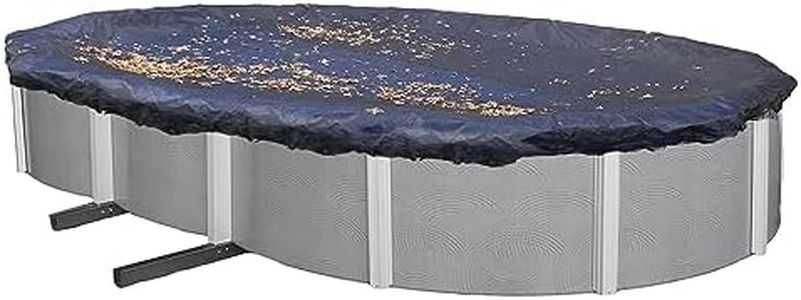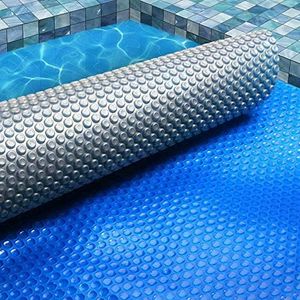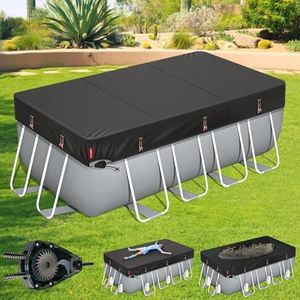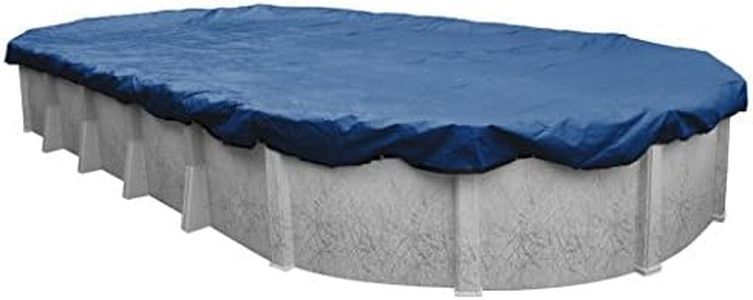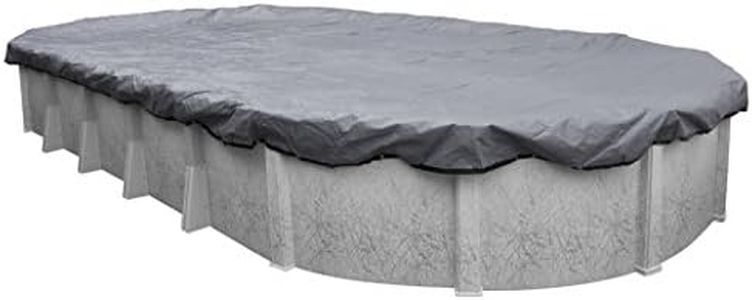We Use CookiesWe use cookies to enhance the security, performance,
functionality and for analytical and promotional activities. By continuing to browse this site you
are agreeing to our privacy policy
10 Best Above Ground Pool Covers
From leading brands and best sellers available on the web.Buying Guide for the Best Above Ground Pool Covers
Choosing the right above-ground pool cover can make a huge difference in keeping your pool clean, safe, and well-maintained. The right cover helps prevent debris like leaves and dirt from getting into your pool, reduces water evaporation, and can add a layer of protection for children and pets. As you start shopping for a pool cover, it's important to think about how you'll use your pool, what problems you're trying to solve (like keeping out debris, conserving heat, or providing safety), and what kind of maintenance routine you prefer.Material TypeThe material of a pool cover determines how durable, weather-resistant, and effective it will be. Common materials include polyethylene, vinyl, and mesh. Polyethylene is lightweight and affordable, making it easy to handle but usually less durable in harsh weather. Vinyl is heavier and more durable, providing better insulation and protection, but can be more difficult to put on and take off. Mesh covers let water through but block debris, making them great for areas with heavy rainfall. When deciding, think about your local weather and how often you want to remove or replace the cover.
Cover Type/StyleThere are several styles of pool covers, such as solar covers, winter covers, and safety covers. Solar covers look like thick bubble wrap and help heat the water while blocking debris—these are good if you want to warm your pool naturally. Winter covers are designed for off-season use, offering strong protection from snow, ice, and debris. Safety covers are built to prevent accidental falls and are usually anchored securely, making them a smart choice if you have children or pets. Your main reason for using a cover (extending pool season, winterizing, or safety) will help you decide which type to choose.
Size and ShapePool covers come in various sizes and shapes to fit round, oval, or rectangular pools. It's crucial to get the correct size; a cover that’s too small won’t provide full protection while one that’s too large can be awkward to manage. Measure your pool carefully and check manufacturer guidelines to find a cover that provides some overlap for securing it but isn’t excessively large. Your specific pool dimensions are the key guiding point here.
Attachment MechanismHow the cover stays in place is important for safety and effectiveness. Options include cable and winch systems, grommets for tie-downs, or weighted edges. Cable and winch systems provide a tight fit, good for windy areas. Grommets let you use ropes or bungees to secure the cover around the pool, which is flexible but may be less snug. Weighted covers are simple to lay over the pool but may not stay put in strong winds. Think about your climate and how much effort you want to spend securing the cover.
Drainage FeaturesSome covers have built-in drainage panels or mesh sections to let rainwater pass through, preventing heavy water buildup on top of the cover. This is especially useful in rainy climates where accumulated water can weigh down and damage the cover. If your area gets frequent rainfall, look for a cover with proper drainage features or prepare to pump off standing water regularly. Your typical weather conditions will dictate how useful this feature is for you.
UV and Chemical ResistancePool covers exposed to sunlight and pool chemicals can degrade quickly unless they are specifically designed to resist these elements. A UV-resistant cover will last longer under the sun, while chemical resistance ensures the cover doesn't break down due to chlorine or other pool treatments. If your pool gets lots of direct sun and you use chemical treatments regularly, prioritize covers that mention UV and chemical protection to maximize lifespan and effectiveness.
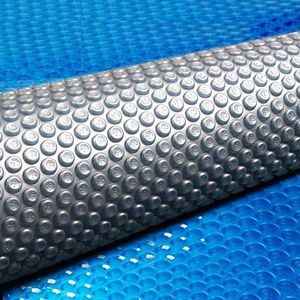
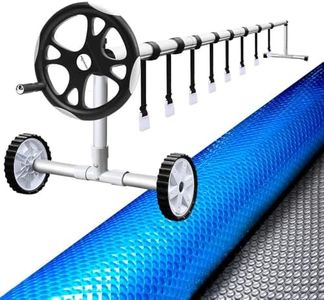
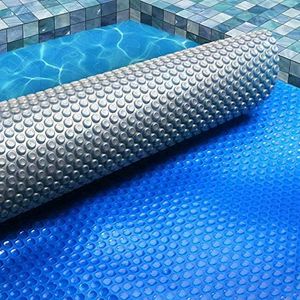
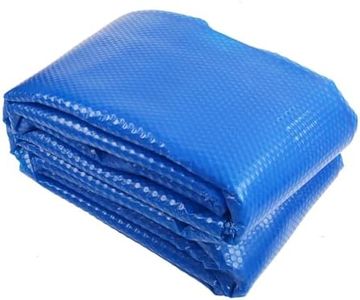
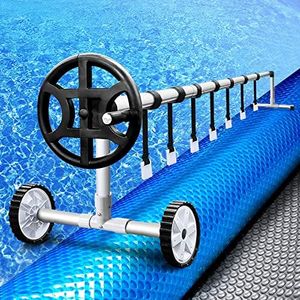
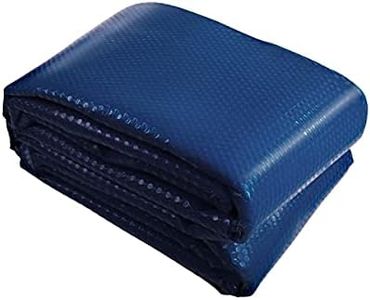
![QH.HOME [2025 Upgraded Ultimate Windproof] 9x18 Ft Oval Pool Cover with Fast Tightening Patented Ratchet,Oval Pool Cover for Above Ground Pools [Durable, Tear Resistant] with Weight-Bearing Rings](https://images-proxy.bestreviews.guide/OHf30Io5t9LUsEbc3ZnjoWTyFpo=/0x300/https://m.media-amazon.com/images/I/51wt0cl4GnL._AC_CX679_.jpg)
